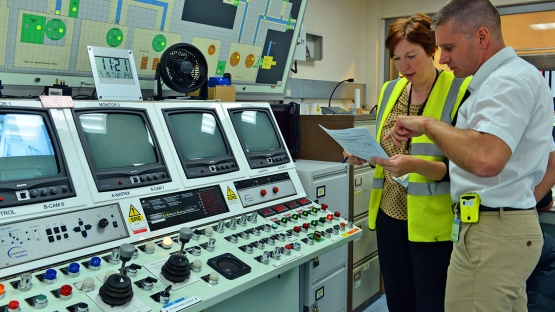Senior executives of any organization or facility involved in activities that could give rise to radiation risks must provide leadership and management for safety, according to an updated IAEA General Safety Requirements publication, adopted as an IAEA safety standard by the Board of Governors on 7 June 2016.
The revised requirements, titled Leadership and Management for Safety, place new emphasis on the role of senior management in ensuring safety to protect human life, health and the environment from harmful effects of radiation. The new standard calls on senior management of organizations to demonstrate leadership for safety by ensuring "as an overriding priority" that safety and protection issues always receive the attention they warrant.
"The safety standards are a cornerstone for nuclear and radiation safety, and they have to be updated to reflect developments," said IAEA Deputy Director General Juan Carlos Lentijo, Head of the Department of Nuclear Safety and Security. "This important update introduces substantive changes that highlight that prioritizing safety is a responsibility not only for staff on the control room floor, but also for chief executive officers and all personnel. Implementing these requirements will ensure a good safety culture."
The publication, which incorporates lessons from the 2011 Fukushima Daiichi accident, states that "senior management shall be responsible for establishing, applying, sustaining and continuously improving a management system to ensure safety" and requires senior managers to identify and provide the resources needed to ensure safety.
In addition, the revised standard widens its scope to include facilities of all sizes – ranging from multi-reactor nuclear power plants to dentists' clinics – and regulatory bodies. And it requires that organizations ensure that safety measures, which aim to prevent accidents, and security measures, which aim to prevent malicious acts, do not compromise each other.
The Board's adoption of the draft concluded work by the Agency to update all seven of the General Safety Requirements publications, which apply to all facilities and activities. They form an important part of the Agency's overall series of safety standards which includes more than 100 safety standards, most of which are for particular technical areas.
All Agency standards are developed in consultation with IAEA Member States and reflect a consensus on what is considered a high level of nuclear and radiation safety. They are not binding documents for IAEA Member States, but are widely applied. Many Member States incorporate the standards or elements of them into their legal and regulatory frameworks and use them in fulfilling obligations under binding legal instruments such as international conventions.




